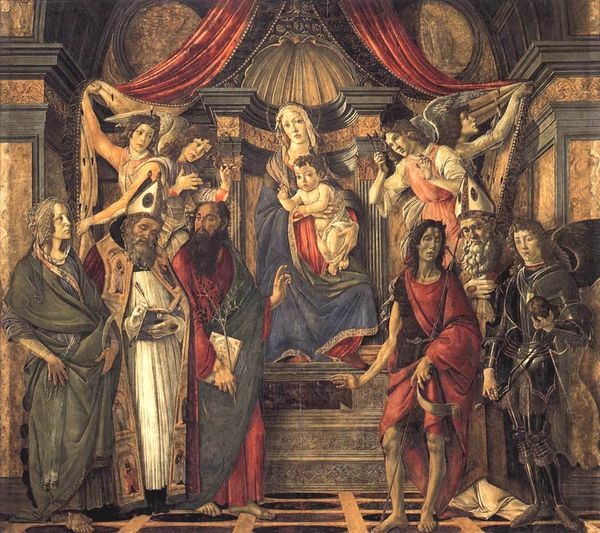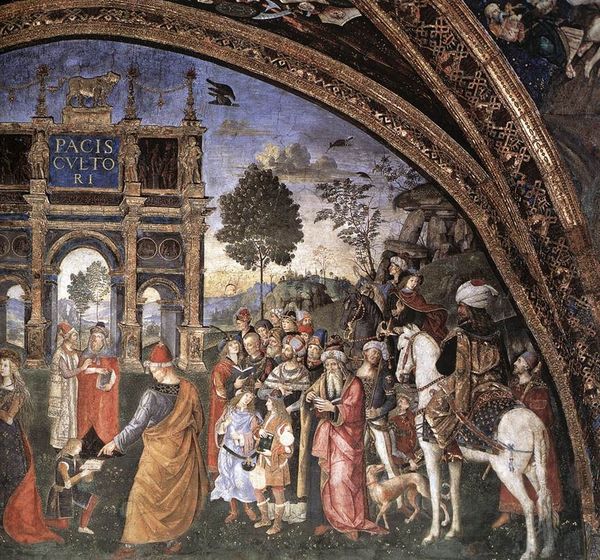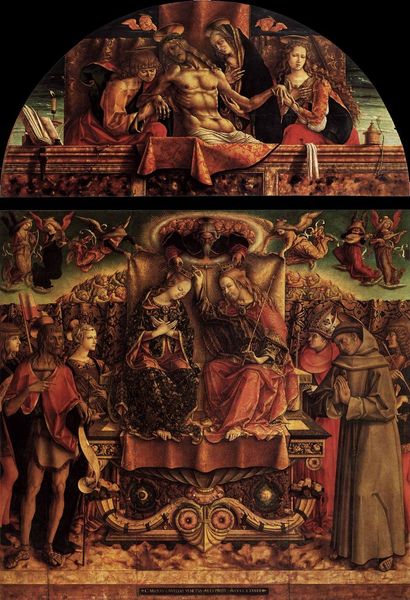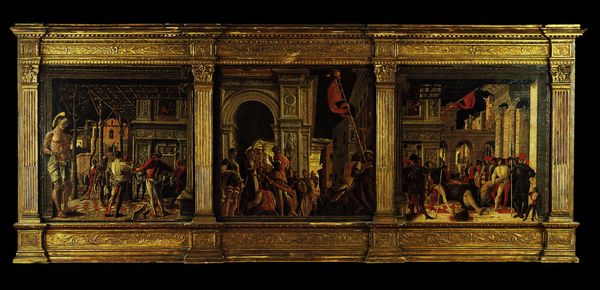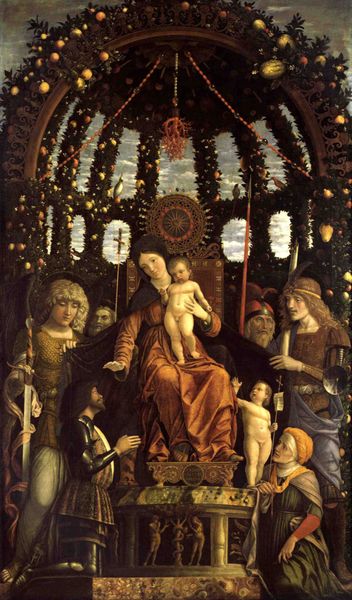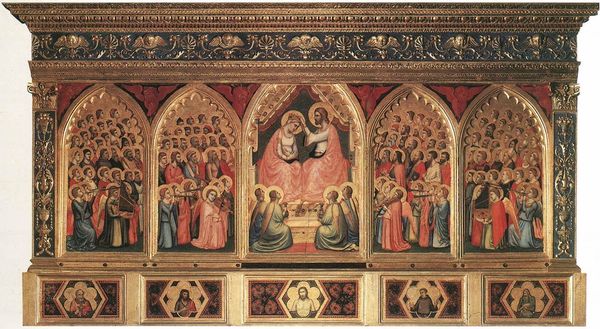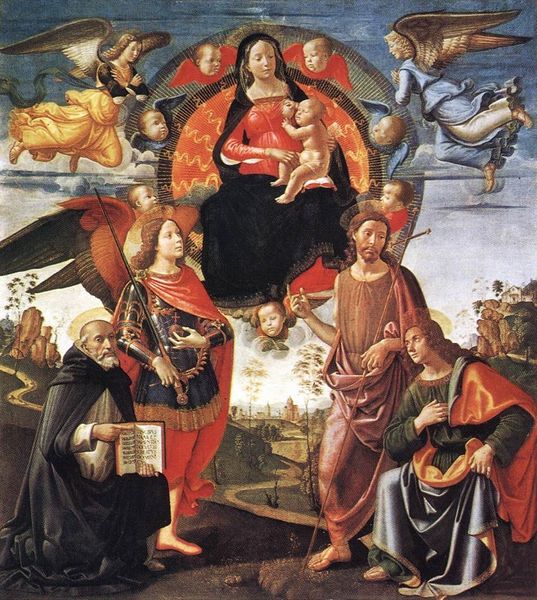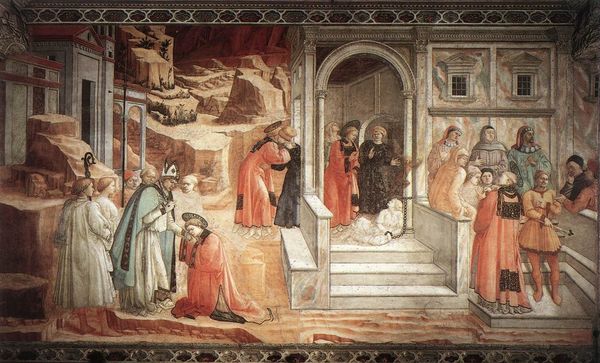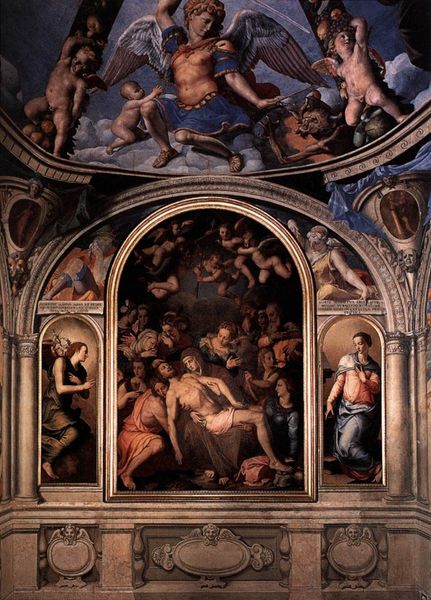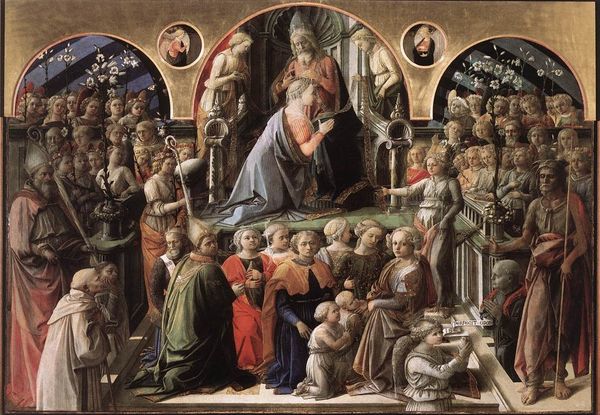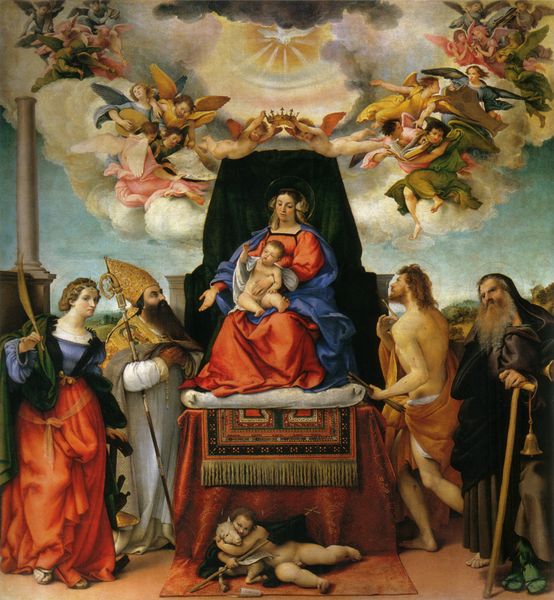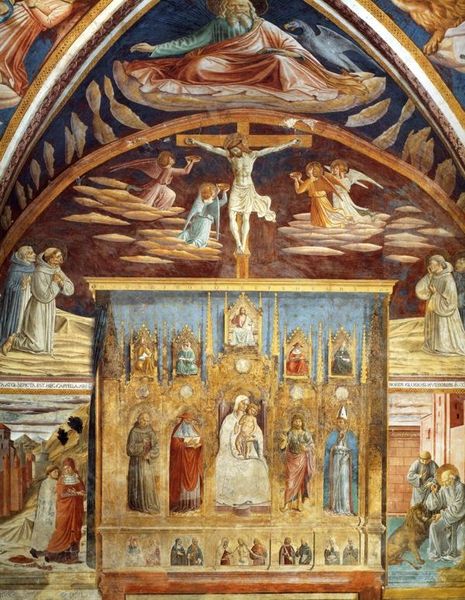
painting, oil-paint
#
portrait
#
narrative-art
#
painting
#
oil-paint
#
sculpture
#
landscape
#
holy-places
#
figuration
#
historic architecture
#
traditional architecture
#
child
#
underpainting
#
christianity
#
history-painting
#
italian-renaissance
#
early-renaissance
#
historical building
#
christ
Dimensions: 460 x 212 cm
Copyright: Public domain
Curator: Well, hello there. Ready to take a plunge into some Renaissance wonder? Editor: Absolutely! We’re looking at Andrea Mantegna's "San Zeno Altarpiece" from 1457, currently in Verona. It’s oil paint, and…it's incredibly symmetrical. A bit like looking into a meticulously ordered dream. What do you see when you look at it? Curator: Oh, "dream" is spot on! For me, it's a testament to perspective. I am seeing him wrestling with the very *idea* of three-dimensional space. Imagine being an artist at the cusp of major discovery! Tell me, Editor, do you notice how he's trying to mimic the architecture of the actual church within the painting itself? Isn’t that playful? Editor: Now that you point it out, yes! It's like a painting within a building within a painting… a Renaissance inception. The columns make more sense now. But the figures, especially Mary and the child – they seem so… solid. Curator: Precisely. Mantegna sought that almost sculptural presence. He was obsessed with ancient Roman art; its stoicism, its gravitas. Do you think the small scenes on the bottom of the altarpiece feel dramatically different? Editor: Definitely darker, and much more narrative driven. You know, these miniatures showing episodes of Christ, St. Peter, St. Paul, and St. John. It makes it so dynamic, telling more than one story within one large panel. Curator: Exactly, these panels allowed artists like Mantegna to weave stories together. I find it so touching; a way for us to participate in that devotion today. Wouldn't you agree, it makes art so engaging? Editor: Totally. I appreciate how this piece invites you to delve into the art’s intricacies rather than merely passing it. The details in "San Zeno Altarpiece" tell us that Renaissance artists enjoyed challenging our view. Thanks! Curator: The pleasure was all mine. And remember, every great artwork invites a conversation. So, keep chatting with them.
Comments
No comments
Be the first to comment and join the conversation on the ultimate creative platform.

